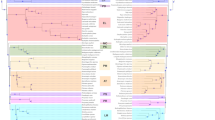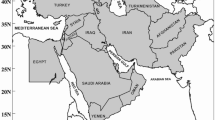Abstract
The Gray-crowned Palm-Tanager (Phaenicophilus poliocephalus), sometimes considered conspecific with its more widespread congener P. palmarum, is restricted to Haiti’s Tiburon Peninsula, a biodiversity hotspot threatened by extensive habitat loss. We used a multilocus phylogeographic approach to identify evolutionarily distinct populations of Phaenicophilus. Mitochondrial haplotypes formed two reciprocally monophyletic groups separated by 5% uncorrected divergence. Genealogical patterns of differentiation at nuclear intron alleles were congruent with those of mtDNA, and the two species also differed in body size and shape. An ancient sea channel between the Tiburon Peninsula and mainland Haiti was likely a dispersal barrier that led to allopatric divergence, a hypothesis supported by our estimates of divergence times. Our results support the recognition of two Palm-Tanager species, confirming P. poliocephalus as Haiti’s only endemic bird species and underscoring the need to protect the Tiburon Peninsula’s single primary forest reserve.




Similar content being viewed by others
References
Arbogast BS, Edwards SV, Wakely J, Beerli P, Slowinski JB (2002) Estimating divergence times from molecular data on phylogenetic and population genetic timescales. Annu Rev Ecol Syst 33:707–740
Barker FK, Vandergon AJ, Lanyon SM (2008) Assessment of species limits among yellow-breasted meadowlarks (Sturnella spp.) using mitochondrial and sex-linked markers. Auk 125:869–879
Becquet C, Przeworski M (2009) Learning about modes of speciation by computational approaches. Evolution 63:2547–2562
Birdlife International (2000) Threatened birds of the world. Lynx Editions and BirdLife International, Barcelona and Cambridge
Bond J (1986) Twenty-sixth supplement to the Check-list of birds of the West Indies (1956). Academy of Natural Sciences, Philadelphia
Brumfield RT, Liu L, Lum DE, Edwards SV (2008) Comparison of species tree methods for reconstructing the phylogeny of bearded manakins (Aves: Pipridae: Manacus) from multilocus sequence data. Syst Biol 57:719–731
Carling MD, Lovette IJ, Brumfield RT (2010) Historical divergence and gene flow: coalescent analyses of mitochondrial, autosomal and sex-linked loci in Passerina buntings. Evolution 64:1762–1772
Cattell RB (1966) The scree test for the number of factors. Multivar Behav Res 1:245–276
Clement M, Posada D, Crandall K (2000) TCS: a computer program to estimate gene genealogies. Mol Ecol 9:1657–1660
Coyne JA, Price TD (2000) Little evidence for sympatric speciation in birds. Evolution 54:2166–2171
Crandall KA, Bininda-Emonds ORP, Mace GM, Wayne RK (2000) Considering evolutionary processes in conservation biology. Trends Ecol Evol 15:290–295
Davalos LM, Brooks T (2001) Parc National La Visite, Haiti: a last refuge for the country’s native birds. Cotinga 16:36–39
Diamond JM (1977) Continental and insular speciation in Pacific land birds. Syst Zool 26:263–268
Dod DD (1984) Massif de la Hotte Isla Paculiar: Orquideas nuevas iluminan su historia. Moscosoa 3:91–100
Eberhard JR, Bermingham E (2004) Phylogeny and biogeography of the Amazona ochrocephala complex. Auk 121:318–332
Ellegren H (2007) Molecular evolutionary genomics of birds. Cytogenet Genome Res 117:120–130
Fridolfsson AK, Ellegren H (1999) A simple and universal method for molecular sexing of non-ratite birds. J Avian Biol 30:116–121
Garcia-Moreno J (2004) Is there a universal mtDNA clock for birds? J Avian Biol 35:465–468
Glor RE, Kolbe JJ, Powell R et al (2003) Phylogenetic analysis of ecological and morphological diversification in Hispaniolan trunk-ground anoles (Anolis cybotes group). Evolution 57:2383–2397
Graham A (2003) Geohistory models and Cenozoic paleoenvironments of the Caribbean region. Syst Bot 28:378–386
Hedges SB (1996) The origin of West Indian amphibians and reptiles. In: Powell R, Henderson RW (eds) Contributions to West Indian Herpetology: a tribute to Albert Schwartz. Contributions to Herpetology 12. Society for the Study of Reptiles and Amphibians, NY, pp 95–128
Hellmayr CE (1936) Catalogue of birds of the Americas and the adjacent islands. Part IX Tersinidae-Thraupidae. Field Museum of Natural History Zoological Series 13
Hey J, Nielsen R (2004) Multilocus methods for estimating population sizes, migration rates and divergence time, with applications to the divergence of Drosophila pseudoobscura and D. persimilis. Genet 167:747–760
Hey J, Nielsen R (2007) Integration within the Felsenstein equation for improved Markov chain Monte Carlo methods in population genetics. Proc Natl Acad Sci USA 104:2785–2790
Hoelzer GA (1997) Inferring phylogenies from mtDNA variation: mitochondrial-gene trees versus nuclear-gene trees revisited. Evolution 51:622–626
Hudson RR, Kaplan NL (1985) Statistical properties of the number of recombination events in the history of a sample of DNA sequences. Genet 111:147–164
Hudson RR, Kreitman M, Aguade M (1987) A test of neutral molecular evolution based on nucleotide data. Genet 116:153–159
Johnson NK, Cicero C (2004) New mitochondrial DNA data confirm the importance of Pleistocene speciation in North American birds. Evolution 58:1122–1130
Keith AR, Wiley JW, Latta SC et al (2003) The birds of Hispaniola: Haiti and the Dominican Republic. British Ornithologists’ Union, Tring, UK
Latta SC (2005) Complementary areas for conserving avian diversity on Hispaniola. Anim Conserv 8:69–81
Latta SC, Rimmer CC, McFarland KP (2003) Winter bird communities in four habitats along an elevational gradient on Hispaniola. Condor 105:179–197
Lee JY, Edwards SV (2008) Divergence across Australia’s Carpentarian barrier: statistical phylogeography of the Red-backed Fairy Wren (Malurus melanocephalus). Evolution 62:3117–3134
Lovette IJ (2004) Mitochondrial dating and mixed support for the “2% rule” in birds. Auk 121:1–6
Lovette IJ, Rubenstein DR (2007) A comprehensive molecular phylogeny of the starlings (Aves: Sturnidae) and mockingbirds (Aves: Mimidae): congruent mtDNA and nuclear trees for a cosmopolitan avian radiation. Mol Phyl Evol 44:1031–1056
Maurrasse F, Rigaud J-G (1982) Cenozoic facies distribution in the southern peninsula of Haiti and the Barahona Peninsula, Dominican Republic, and its relations concerning the tectonic evolution of the La Selle-Bauruco block. Carib Geol Coll Contr 9:1–24
McDonald MA, Smith MH (1990) Speciation, heterochrony, and genetic variation in Hispaniolan Palm-Tanagers. Auk 107:707–717
McDonald MA, Smith MH (1994) Behavioral and morphological correlates of heterochrony in Hispaniolan Palm-Tanagers. Condor 96:433–446
Milne I, Lindner D, Bayer M, Husmeier D, McGuire G, Marshall DF, Wright F (2009) TOPALi v2: a rich graphical interface for evolutionary analyses of multiple alignments on HPC clusters and multi-core desktops. Bioinformatics 25:126–127
Moritz C (1994) Defining ‘evolutionary significant units’ for conservation. Trends Ecol Evol 9:373–375
Myers N, Mittermeier RA, Mittermeier CG et al (2000) Biodiversity hotspots for conservation priorities. Nature 403:853–858
Nielsen R, Wakely J (2001) Distinguishing migration from isolation: a Markov chain Monte Carlo approach. Genet 158:885–896
Paryski P, Woods CA, Sergile FE (1989) Conservation strategies and the preservation of biological diversity in Haiti. In: Woods CA (ed) Biogeography of the West Indies: past, present, and future. Sandhill Crane Press, Florida
Primmer CR, Borge T, Lindell J et al (2002) Single nucleotide polymorphism characterization in species with limited available sequence information: high nucleotide diversity revealed in the avian genome. Mol Ecol 11:603–612
Rimmer CC, McFarland KP (2001) Known breeding and wintering sites of Bicknell’s Thrush. Wilson Bull 113:234–236
Rimmer CC, Almonte J, Garrido E et al (2003) Bird records in a montane forest fragment of western Sierra de Neiba, Dominican Republic. J Caribb Ornithol 16:55–60
Rimmer CC, Townsend JM, Townsend AK et al (2005) Avian diversity, abundance, and conservation status in the Macaya Biosphere Reserve of Haiti. Ornitol Neotropical 16:219–230
Rimmer CC, Woolaver LG, Nichols RK et al (2008) First description of nests and eggs of two hispaniolan endemic species: Western Chat-tanager (Calyptophilus tertius) and Hispaniola Highland-tanager (Xenoligea montana). Wilson J Ornithol 120:190–195
Rozas J, Sanchez-DelBarrio JC, Messeguer X et al (2003) DNA polymorphism analyses by the coalescent and other methods. Bioinformatics 19:2496–2497
Rubinoff D, Holland BS (2005) Between two extremes: mitochondrial DNA is neither the panacea nor the nemesis of phylogenetic and taxonomic inference. Syst Biol 54:952–961
Sergile FE, Woods CA (2001) Status of conservation in Haiti: a 10-year retrospective. In: Woods CA, Sergile FE (eds) Biogeography of the West Indies: patterns and perspectives. CRC Press, Florida
Stephens M, Scheet P (2005) Accounting for decay of linkage disequilibrium in haplotype inference and missing data imputation. Am J Hum Genet 76:449–462
Stephens M, Smith NJ, Donnelly P (2001) A new statistical method for haplotype reconstruction from population data. Am J Hum Genet 68:978–989
Strasburg JL, Rieseburg LH (2009) How robust are “Isolation with Migration” analyses to violations of the IM model? A simulation study. Mol Biol Evol 27:297–310
Swofford DL (2000) PAUP*: phylogenetic analysis using parsimony (*and other methods). Sinauer Associates, Massachusetts
Thompson FG (1986) Land mollusks of the proposed National Parks of Haiti. Published report, US Agency for International Development, Port-au-Prince, Haiti
Townsend AK, Rimmer CC, Latta SC et al (2007) Ancient differentiation in the single-island avian radiation of endemic Hispaniolan chat-tanagers (Aves: Calyptophilus). Mol Ecol 16:3634–3642
Weir JT, Schluter D (2008) Calibrating the avian molecular clock. Mol Ecol 17:2321–2328
White PS, Densmore LD (1992) Mitochondrial DNA isolation. In: Hoelzel AR (ed) Molecular genetic analysis of populations. Oxford University Press, New York, pp 29–58
Woods CA, Ottenwalder JA (1992) The natural history of Southern Haiti. Florida Museum of Natural History, FL
Acknowledgements
We thank the many people who assisted with field work on Hispaniola, particularly J Almonte, J Brocca, E Cuevas, E Fernandez, E Garrido, J Gerwin, J Goetz, and J Klavins, as well as CA Makarewich. LM Stenzler, and AL Talaba for guidance and assistance with laboratory work. This research was supported by the Hughes Scholar Program, the Dextra Undergraduate Research Fund, the College of Agriculture and Life Sciences of Cornell University, the Benning Fund, the Mario Einaudi Center for International Studies, the American Ornithologists’ Union, the Tinker Foundation/Latin American Studies Program, the Ecology and Evolutionary Biology Department of Cornell University, NSF grants DEB-0515981 and DEB-0315218, the Blake Fund, the Carolyn Foundation, the Conservation and Research Foundation, the National Geographic Society, the Stewart Foundation, the Thomas Marshall Foundation and friends of the Vermont Center for Ecostudies. Authorization to conduct work in the Dominican Republic was provided by the Subsecretaria de Areas Protegidas and the Departamento de Vida Silvestre. Field studies in Haiti were authorized by the Ministry of Environment and Agriculture. We are especially grateful for logistical support in Haiti provided by Société Audubon Haiti, particularly P Bayard, J Vilmond, and F Sergile. Statistical analyses were carried out, in part, using the resources of the Computational Biology Service Unit from Cornell University which is partially funded by Microsoft Corporation.
Author information
Authors and Affiliations
Corresponding author
Rights and permissions
About this article
Cite this article
Sly, N.D., Townsend, A.K., Rimmer, C.C. et al. Phylogeography and conservation of the endemic Hispaniolan Palm-Tanagers (Aves: Phaenicophilus). Conserv Genet 11, 2121–2129 (2010). https://doi.org/10.1007/s10592-010-0098-4
Received:
Accepted:
Published:
Issue Date:
DOI: https://doi.org/10.1007/s10592-010-0098-4




